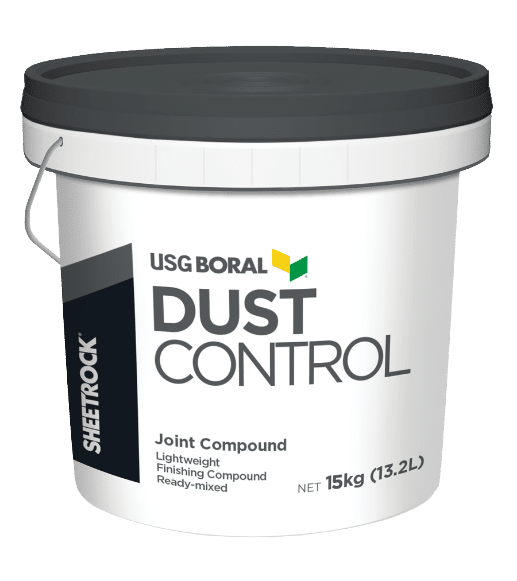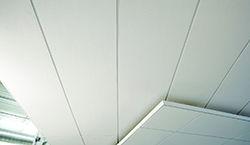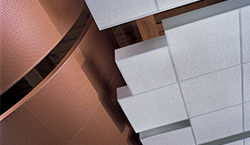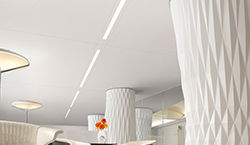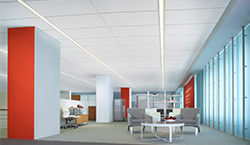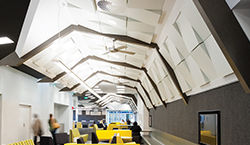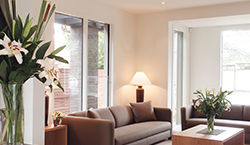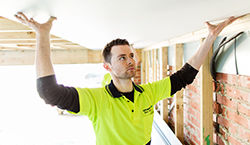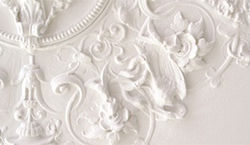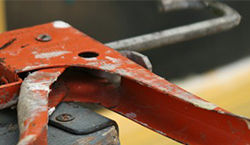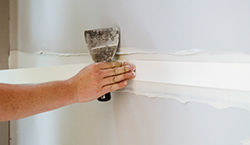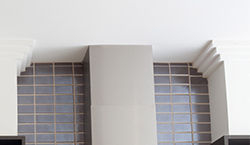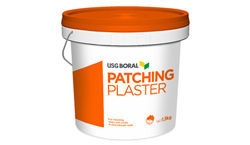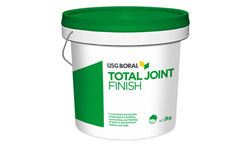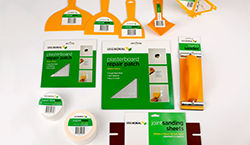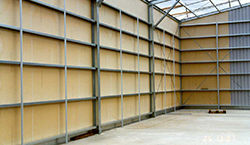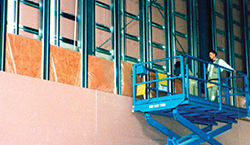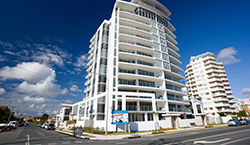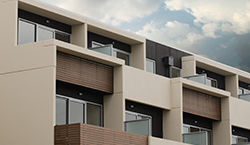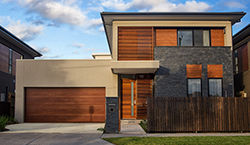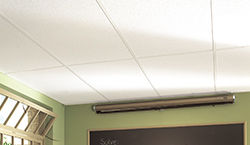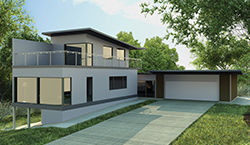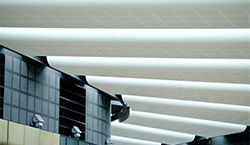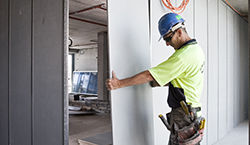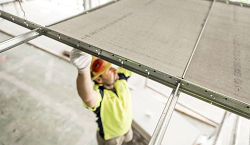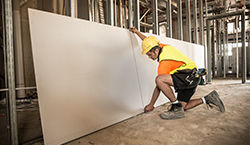-
AUSTRALIA, ENGLISH
- Contact
- Where to Buy
- Favourites
-
Looking for product documents?
Try our Document Finder
-
About Knauf
-
About Knauf
-
About Us
-
About Us
-
-
Board Of Directors
-
Board Of Directors
- Jennifer Scanlon, Chairman, USG Boral; Executive Vice President; President, International; President L&W Supply Corporation at USG
- James S. Metcalf, Chairman, President and Chief Executive Officer, USG Corporation
- Mike Kane, Chief Executive Officer and Managing Director, Boral Limited
- Al Borm, President & CEO, Boral Industries Inc
- Rosaline (Ros) Ng, Chief Financial Officer, Boral Limited
-
See All
-
-
Blog
-
Blog
- USG Boral presents ASONA at the Design Speaks Old School/New School Event
- USG Boral Partiwall® the acoustically sound and flexible partition wall system
- Architects’ perspective on USG Boral Ensemble™
- Achieving an acoustic ceiling with a monolithic look is now easy
- PERSPECTIVES: Retiring industry legend not planning to lay down his trowel
-
See All
-
- Careers
-
Contact Us
-
Contact Us
-
- Code Of Conduct
- Supplier Code of Conduct
-
-
Products
-
Products
-
Ceilings
-
Ceilings
- Acoustic Panels & Ceiling Tiles
ACOUSTIC PANELS & CEILING TILES
- Acoustic Suspension Systems
ACOUSTIC SUSPENSION SYSTEM
- Drywall Suspension Systems
DRYWALL SUSPENSION SYSTEM
- Integrated Systems
INTEGRATED SYSTEMS
- Specialty Ceilings
SPECIALTY CEILINGS
- Metal Ceilings
- Asona Acoustical Range
- ENSEMBLE™
-
-
Interior Linings
-
Interior Linings
- Standard Plasterboard
Standard Plasterboard
- SHEETROCK® Plasterboard
SHEETROCK® Plasterboard
- Technical Boards
TECHNICAL Plasterboard
- Multi-Application Boards
Multi-Application Boards
- testingMissingAltText
- testingmegamenualt2
-
-
Finishes
-
Finishes
- Jointing Compounds
Jointing Compounds
- Speciality Plasters
Specialty Plasters
- Adhesives
Adhesives
- Primers
Primers
- Sealants
Sealants
- Joint Tapes
Joint Tapes
-
-
Steel Framing
-
Steel Framing
- USG Boral Steel Stud & Track System (New Zealand)
USG Boral Steel Stud & Track System (New Zealand)
- Rondo® Metal Components
Rondo® Metal Components
-
-
Cornice
-
Cornice
- SHEETROCK® Cove
SHEETROCK® Cove
- Decorative Cornice
Decorative Cornice
-
-
Plastering DIY
-
Plastering DIY
- DIY Cornice Adhesive
DIY Cornice Adhesive
- DIY Patching Plaster
DIY Patching Plaster
- Total Joint Finish
Total Joint Finish
- Stud Adhesive
Stud Adhesive
- Tools & Accessories
Tools & Accessories
-
-
Insulation
-
Insulation
-
-
Industrial Plaster
-
Industrial Plaster
-
-
-
Solutions
-
Solutions
-
Plasterboard Systems
-
Plasterboard Systems
- Systems+
Systems+
- CinemaZone® System
CinemaZone®
- Fireclad® System
Fireclad® Fire-rated External Wall System
- Firewall® System
Firewall® System
- IntRwall® System
IntRwall® System
- Multiframe™ System
Multiframe™ System
- NeighbourZone™ System
NeighbourZone™ System
- OutRwall® System
OutRwall® System
- Partiwall® System
Partiwall® Separating Wall System
- Quiet Living™ System
Quiet Living™ System
-
-
Segment Solutions
-
Segment Solutions
- Health Care
Health Care
- Education
Education
- Bushfire Protection
Bushfire Protection
- Multi-Residential
Multi-Residential
-
-
Science
-
Science
- Acoustics
Acoustics
- Fire Performance
Fire Performance
- Seismic
Seismic
-
-
-
Inspiration
-
Inspiration
-
For Architects / Designers
-
For Architects / Designers
-
USG Boral for Architects / Designers
We believe we can change the way buildings are designed, built and occupied by delivering innovations that help you work smarter, do more and build better.
Plasterboard Installation Manual
See All
-
-
For Builders / Installers
-
For Builders / Installers
-
USG Boral for Builders / Installers
Proudly Supporting those who Build, every step of the way.
Plasterboard Installation Manual
See All
-
-
For Homeowners
-
For Homeowners
-
USG Boral for Homeowners
Our plastering products, tools & accessories are designed for the home renovator/builder making minor alterations or repairs to plasterboard walls & ceilings.
Plasterboard Installation Manual
See All
-
-
For Resellers / Distributors
-
For Resellers / Distributors
-
USG Boral for Resellers & Distributors
Our aim is to provide you solutions and make opportunities to scale your business efficiently.
Plasterboard Installation Manual
See All
-
-
-
Resources & Tools
-
Resources & Tools
- CAD Finder
- Lighting and Decoration Microsite
- Lighting & Decoration Guide
- Specialty Ceilings Design Studio
- Boral Design Lab
- Plasterboard Installation Manual
- Partiwall Estimator
-
BIMWIZARD
-
BIMWIZARD
- BIMWIZARD®
- NEW FEATURES
-
See All
-
- eSelector
-
TecASSIST
-
TecASSIST™ - USG Boral
-
-
Acoustic Ceilings e-Estimator
-
Acoustic Ceilings e-Estimator
-
-
-
What's New
-
What's New
-
News And Promotions
-
News & Promotions – USG Boral
- Holiday Trading Hours 2019/2020
- USG Boral a proud sponsor of Hoot Homes and Kylie & Jackie O’s Set You Up for Life home giveaway!
- USG Boral air-drying compounds help you avoid risk of early dry-out in hot windy dry conditions
- Labrador Trade Store Closing Down
- Competition: Your chance to win a DeWALT 5-Piece Combo Kit with WETSTOP™
-
See All
-
-
Press
-
USG Boral Press Coverage
- USG Boral Australia and New Zealand proposed to become 100% Boral-owned
- USG Boral wins Good Design Awards for design and innovation
- USG Boral advocates for healthier work sites in building and construction
- USG Boral continues to support the Royal Children's Hospital Good Friday Appeal
- BORAL AND USG BORAL SUPPORT INDIGENOUS YOUTH PROGRAM
-
See All
-
-
AUSTRALIA, ENGLISH
- Contact
- Where to Buy
- Favourites
- My Downloads
-
User Profile
User Profile
- Manage Profile
- Logout
-
Looking for product documents?
Try our Document Finder
xui3RRd85PW+7EkqtHyQYghttp://myaccount-stg.knaufapac.com -
- Whats New
- USG Boral Press Coverage
- USG Boral takes the lead on reducing dust on construction sites
USG Boral takes the lead on reducing dust on construction sites
Airborne hazards in the workplace, including dust, have been associated with the development of a wide range of respiratory diseases in Australia. While some of these diseases have declined due to greater awareness and control of exposure, the construction industry can also look for new ways to reduce airborne hazards. The volume of respirable airborne dust created on building sites during sanding can now be reduced with new SHEETROCK® Dust Control Joint Compound from USG Boral the first of it's kind or the Australian construction industry.
Tested to the USA’s National Institute of Occupational Health and Safety (NIOSH) Method 0600, SHEETROCK® Dust Control produces respirable airborne dust at levels lower than the USA’s current Occupational Safety and Health Administration (OHSA) Permissible Exposure Limits (PELs), which are lower than the PELs set by Safe Work Australia.
Working with USG Boral’s Dust Control joint compound helps to mitigate dust and adds an extra layer of protection for painters, plasterers, builders and other trades on site.
“Dust Control has been designed to reduce the amount of respirable airborne dust during the sanding process,” said Tim Harrington, compounds category manager at USG Boral. “The dust particles are heavier, and tend to fall straight to the ground, and respond better to the vacuum in power sanders, rather than creating fine, fly away dust that is more likely to get in ears, eyes, and be inhaled. This new product has been designed with the health and safety of our customers in mind.”
Ideal for both new builds and renovation projects, where furniture often needs to be removed or covered, Dust Control also makes clean up easier and faster.
The formulation glides on effortlessly with a trowel, roller or sprayer, weighs up to 25 per cent less than conventional USG Boral joint compounds, and is less inclined to shrinkage.
“Dust Control has been trialled locally and the results have been outstanding,” commented Harrington. “Prior to the release of SHEETROCK Dust Control, we asked a selection of plastering specialists to use the product on existing projects. The feedback has been extremely positive. The product not only minimises the dust generated by sanding, it is also an exceptional finishing compound.”
One bucket (19L) of Dust Control will cover approximately 36 square metres of plasterboard.
For more information, including our performance videos, visit www.usgboral.com/au/dustcontrol
